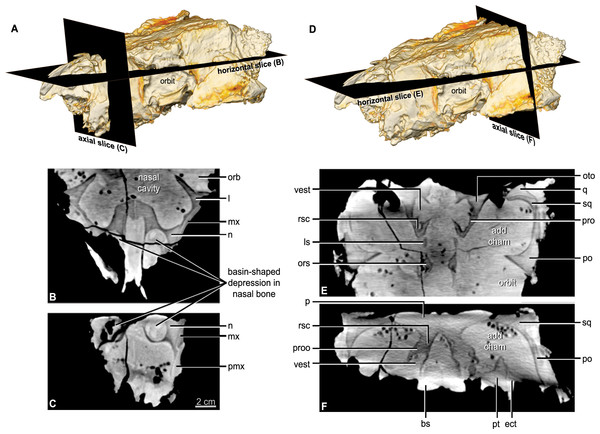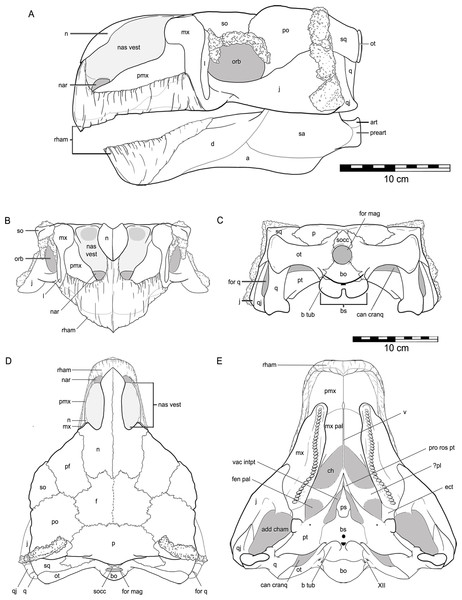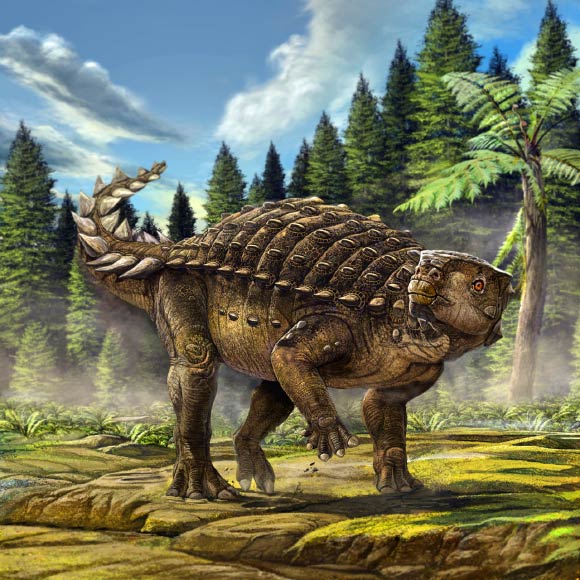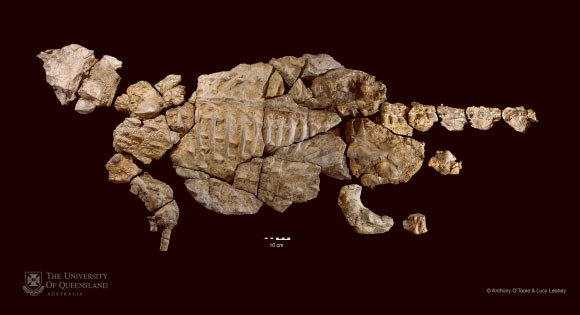This new species is one of a group of four-legged armored herbivorous dinosaurs called ankylosaurs.The near-complete skeleton of the 100 million-year-old (Cretaceous period) beast, including most of the skull and mandible, along with postcranial material, was discovered in 1989 in the Allaru Mudstone on Marathon Station near Richmond, north-western Queensland, by Mr Ian Ievers.
But new research led by University of Queensland paleontologist Lucy Leahey has revealed the specimen is a distinctly different species than previously thought.

CT scan slices through the nasal cavity A, B, C, and braincase D, E, F regions of Kunbarrasaurus ieversi gen. et sp. nov. (formerly Minmi sp.) (QM F18101).
(A, D) Volume rendering of the entire skull showing the positions of the horizontal slices in (B, E) and the axial (vertical) slice in (C, F). Abbreviations: ls, laterosphenoid; ors, orbitospenoid; oto, otoccipital; proo, prootic; rsc, rostral semicircular canal; vest, vestibule. For other abbreviations see Fig. 1. Scale bar equals 2 cm.
“When it was first studied back in the 1990s, the fossil was placed it in the same genus as Australia’s only other named ankylosaur, Minmi, which is based on some bones from Roma in south-western Queensland,” Ms Leahey explained.
The find is one of the best-preserved ankylosaur fossils in the world and the most complete dinosaur so far discovered in Australia.Ms Leahey and her colleagues named the new ankylosaur Kunbarrasaurus ieversi, a reference to the man who first found it.

Reconstruction of the skull of Kunbarrasaurus ieversi gen. et sp. nov. (QM F18101), in (A) left lateral, (B) rostral, (C) caudal, (D) dorsal and (E) ventral aspects.
Abbreviations: a, angular; art, articular; d, dentary; for q, quadrate foramen; nar, nares; pr art, prearticular; rham, rhamphotheca; sa, surangular. Legend: grey, void within skull; dashed line, partially fused suture; dotted line, inferred suture; grey line, bone outline or suture beneath rhamphotheca. Portions not known include rhamphotheca, apex of maxillary rostrum, caudal extent of maxillary secondary palate, ventral edges of jugal, quadratojugal and quadrates. Scale bars equal 10 cm.
“The species name honors Mr Ian Ievers, discoverer of the holotype. The name therefore means Ievers’ shield-lizard,” they explained.
“The generic name combines Kunbarra [kunbara], the Mayi (Wunumara) word for ‘shield’, and souros, the Greek word for ‘lizard’, and is a reference to the animal’s heavily ossified skin.”



 December 12th, 2015
December 12th, 2015  Riffin
Riffin 

 Posted in
Posted in  Tags:
Tags: 